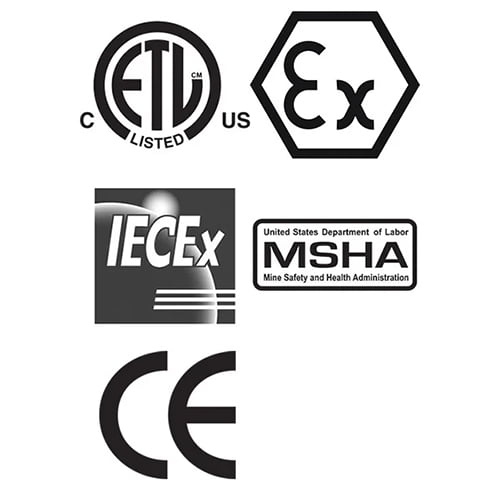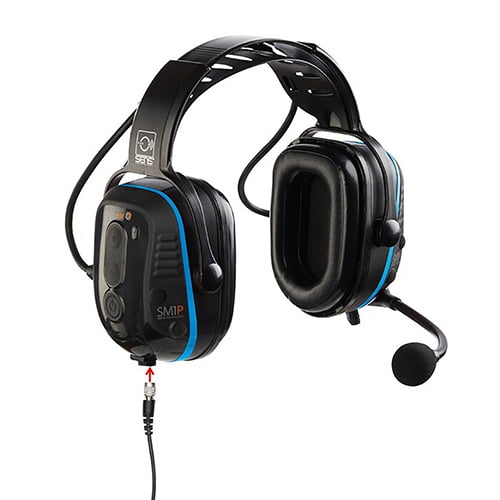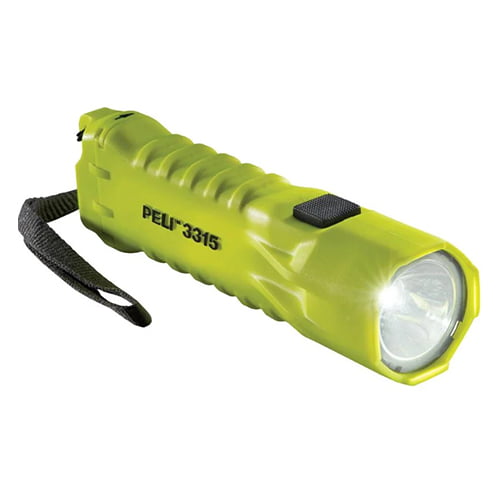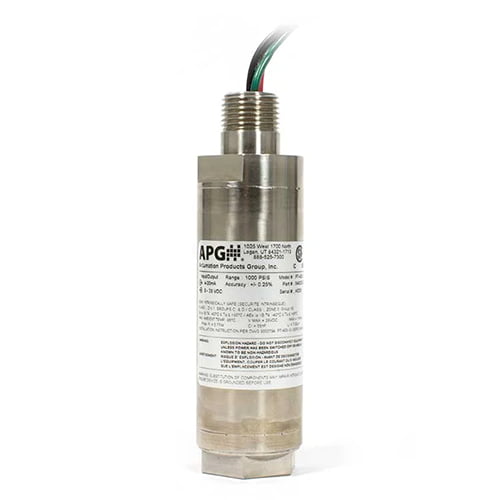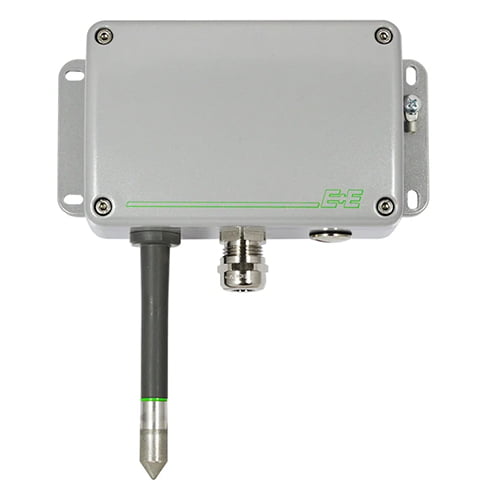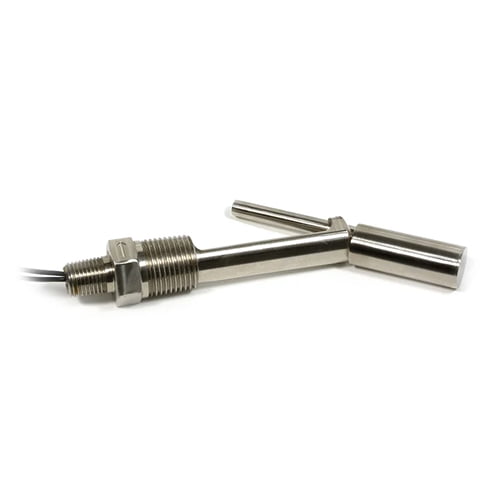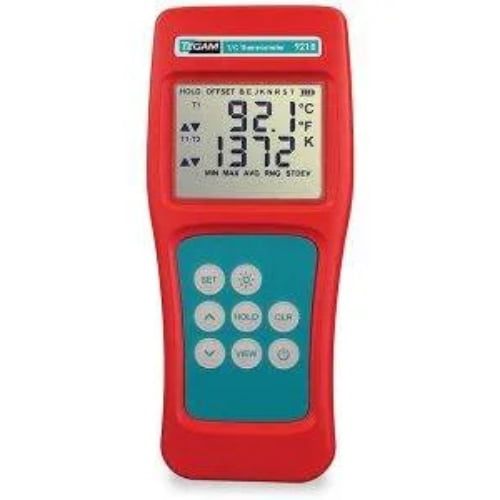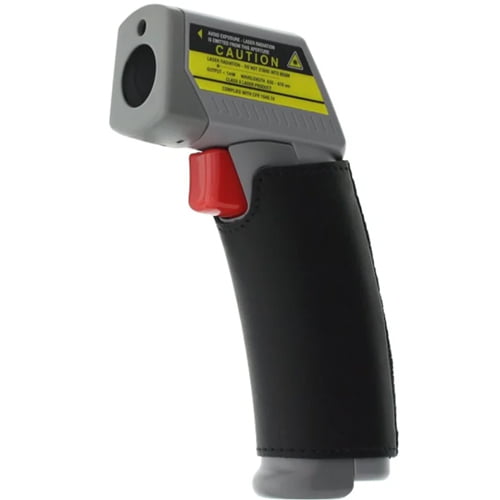The Monongah Mine Disaster is considered the worst mining disaster in American history. A simple, low-voltage electric bell caused a spark that ignited the methane-filled tunnel, killing more than 362 miners.
After the incident, congress created the United States Bureau of Mines to investigate and inspect mines to reduce explosions.
Similarly, the ATEX certification was also created to ensure non-intrinsically safe equipment, such as the electric bell, is not used in hazardous environments.
In such environments, the risk of explosions and potential harm is ever-present. The ATEX certification plays a crucial role in mitigating these risks by providing standards for hazardous area equipment.
However, misconceptions surrounding ATEX certification persist, leading to misguided decisions that compromise safety.
To demystify such misconceptions, you need to know that:
- ATEX certification is necessary
- Intrinsically safe products are not all the same
- ATEX certification does not guarantee absolute safety
By gaining a comprehensive understanding of ATEX regulations and their significance, safety professionals and industry experts can make informed choices to safeguard their operations.
One of the choices would be to make Intrinsically Safe Store your source for intrinsically safe equipment.
Let us embark on a journey to demystify ATEX certification and shed light on its true importance in hazardous environments.
Demystifying ATEX Certification: Ensuring Safety in Hazardous Environments
ATEX certification is a crucial aspect of safety in hazardous environments where the risk of explosions and fires looms large.
This certification, derived from the EU directive “Atmosphères Explosibles,” regulates equipment and protective systems used in potentially explosive atmospheres across industries such as oil and gas, chemicals, mining, and manufacturing.
The ATEX certification process can be summarized in these 4 steps:
Step 1 – Hazardous Area Classification
This process involves assessing the environment where the equipment will be used, to determine the potential presence and characteristics of explosive atmospheres. The classification helps identify the level of protection required for the equipment.
It typically involves:
- Collecting data: Gather relevant information about the site, such as the substances present, their properties, and the likelihood and duration of their release. This information may come from the site owner, process engineers, or relevant industry standards.
- Assessing ignition sources: Identify potential ignition sources that could cause explosions in the hazardous area. This includes electrical equipment, hot surfaces, sparks, or friction. Evaluate the likelihood and effectiveness of the ignition sources.
- Defining zones: Based on the collected data and assessment, divide the hazardous area into zones according to the ATEX classification system. The classification system distinguishes between gas (Zone 0,1, and 2) and dust (Zone 20, 21, and 22) environments, with Zone 0 and 20 representing the highest levels of explosion risk.
Step 2 – Design and Testing
Once the hazardous area is classified, the equipment needs to be designed and tested to ensure it meets the necessary safety requirements.
This step involves:
- Design: Design the equipment or protective system in accordance with the applicable ATEX directives and harmonized standards. This includes selecting appropriate materials and implementing safety features that can regulate factors such as temperature limits, electrical safety, and mechanical integrity.
- Prototyping: Build prototypes of the equipment and conduct initial testing and evaluation. This may involve functional testing, electrical testing, endurance testing, and verification of explosion protection measures.
- Type examination: Engage a notified body (if required) to perform a type examination. The notified body assesses the design, construction, and performance of the equipment against relevant ATEX standards. They may conduct inspections, and tests, and review technical documentation to ensure compliance.
- Production sample testing: If applicable, production samples may be tested to verify that the equipment produced in volume maintains the same level of safety as the tested prototypes. This step ensures consistency in manufacturing.
Step 3 – Quality Assurance
After designing and testing, establish a robust quality assurance system to maintain compliance with ATEX requirements throughout the equipment’s production life cycle.
The quality assurance process involves:
- Document control: Establish procedures for maintaining and controlling technical documentation, including design specifications, risk assessments, test reports, and conformity declarations.
- Manufacturing control: Implement manufacturing processes that ensure consistent product quality. This includes procedures for material traceability, production monitoring, and quality control measures at various stages of the manufacturing process.
- Internal audits: Conduct regular internal audits to verify that the quality assurance procedures are being followed and that the equipment continues to meet the required safety standards.
Step 4 – Assessment by Notified Body
Depending on the equipment category and type, the involvement of a notified body may be necessary. The notified body plays a vital role in the certification process and conducts assessments to ensure compliance.
The assessment process typically involves the following:
- Technical documentation review: Submit the technical documentation, including design specifications, test reports, and risk assessments, to the notified body for review. The notified body examines the documentation to assess compliance with relevant ATEX standards.
- Audits and inspections: In some cases, the notified body may conduct on-site audits or inspections of the manufacturing facilities. This ensures that the production processes align with the documented procedures and that the equipment being manufactured matches the certified design.
- Testing and verification: The notified body may perform additional tests or verification activities to validate the safety and performance of the equipment. This may involve testing for electrical safety, mechanical strength, temperature limits, and resistance to explosions.
- Certification issuance: If the equipment meets all the necessary requirements and passes the assessment by the notified body, the ATEX certificate is issued. The certificate demonstrates that the equipment complies with the ATEX directives and can be used in specified hazardous areas.
By adhering to ATEX regulations, organizations mitigate risks, protect personnel, and prevent catastrophic incidents. ATEX-certified equipment effectively controls potential ignition sources, guaranteeing the safety of the workforce and critical infrastructure.
Understanding the zones, categories, and markings associated with ATEX certification is essential for selecting the right equipment.
Concept Clarifier: Just as a well-equipped kitchen doesn’t automatically make a great chef, ATEX certification alone isn’t enough to ensure absolute safety. Appropriate handling and maintenance practices are equally crucial.
Ensuring Safety in Hazardous Environments: Intrinsically Safe Store’s ATEX-Certified Solutions
At Intrinsically Safe Store, we are dedicated to providing top-quality safety products specially designed for hazardous environments.
Our comprehensive range of ATEX-certified equipment offers reliable and compliant solutions that safeguard against potential risks and dangers.
Here’s a closer look at the key product categories we offer:
Intrinsically Safe Communication Devices
We offer intrinsically safe two-way radios and communication systems that enable reliable and secure communication in explosive atmospheres.
They work on various frequencies and are certified for ATEX Zone 1 and Class 1 Division 1 and Class 1 Division 2 hazardous area use.
The radios are equipped with rechargeable batteries that guarantee extensive talk and standby time.
Here are some other functions of our two-way radios:
Push-To-Talk Functionality
This key feature of our two-way radios allows users to communicate instantly with a single button press.
In hazardous environments, where prompt and efficient communication is crucial, this feature ensures seamless operations by eliminating the need for dialing or selecting channels, saving time and enabling quick response in emergency situations or during critical operations.
Push-to-talk functionality enhances situational awareness by facilitating instant communication and coordination, enabling teams to stay connected and make timely decisions.
Noise Cancellation
Hazardous environments often have high levels of ambient noise, such as machinery, equipment, or industrial processes. The noise cancellation technology used in our intrinsically safe two-way radios helps filter out background noise and improve the clarity of transmitted audio.
By reducing unwanted noise interference, noise cancellation is especially valuable in hazardous settings where clear communication is vital for understanding instructions, relaying critical information, and maintaining situational awareness.
Rugged Design
Our intrinsically safe two-way radios feature rugged designs that provide durability and reliability, even in harsh industrial settings. They are built to withstand impacts, drops, vibration, and exposure to water or dust.
The rugged design ensures that the radios can withstand the physical demands of the environment and continue to function reliably.
This ensures seamless operations by minimizing the risk of damage or failure, allowing workers to rely on their communication devices in challenging situations. It enhances situational awareness by ensuring that communication remains available, even in harsh and unpredictable conditions.
Key Takeaway: Our intrinsically safe two-way radios offer secure communication in hazardous environments with features such as push-to-talk functionality, noise cancellation, and rugged design. They’re certified for use in ATEX Zone 1 and Class 1 Divisions 1 and 2 areas.
Intrinsically Safe Lighting Solutions
Intrinsically Safe Store offers a wide selection of explosion-proof, portable, and fixed lighting products, including LED flashlights, headlamps, and area lighting.
Our ATEX-certified lighting solutions play a crucial role in hazardous environments by providing reliable illumination while mitigating the risk of sparks or overheating. In such settings, where explosive atmospheres exist, ensuring proper lighting is essential to maintain safety and productivity.
By employing intrinsically safe technologies, these lighting solutions prevent the release of energy sufficient enough to ignite flammable substances. They are carefully engineered to operate at low temperatures, have spark-free designs, and use materials that reduce the risk of overheating or arcing.
They offer reliable and safe illumination, contributing to enhanced visibility, improved situational awareness, and reduced accident risks, allowing workers to operate with confidence in hazardous environments.
“The NITECORE EF1 has a simple switch easy to use, super high output up to 830 Lumens, super high quality, and thick body tube.” — Jack, Verified Buyer
Intrinsically Safe Measurement and Monitoring Equipment
At Intrinsically Safe Store, our range of safe measurement and monitoring equipment includes intrinsically safe cameras, gas detectors, and environmental monitoring devices.
Our range of products can be used to measure and calibrate temperature, pressure, flow, level, and humidity.
The following features enable them to provide accurate readings, real-time data, and comprehensive monitoring to help identify potential hazards promptly:
Pressure Sensors
Pressure sensors are designed to measure and monitor pressure levels in hazardous environments. Intrinsically safe pressure sensors are made to operate safely by preventing the release of sufficient energy to cause ignition.
They provide accurate pressure readings, allowing for precise monitoring of process conditions.
Real-time data from pressure sensors helps identify abnormalities or deviations that could indicate potential hazards, enabling prompt action to mitigate risks.
“This amazing instrument, is easy to use and easy to calibrate. It also offer one-handed operation even when wearing the thickest of gloves. Certified ATEX Zone 0, IECEx use in hazardous areas.” — Archeal, Verified Buyer
Temperature Sensors
Temperature sensors are crucial for monitoring and controlling temperature in hazardous environments. Intrinsically safe temperature sensors are designed to operate within safe temperature limits and prevent the risk of sparks or overheating.
They provide accurate temperature readings, allowing for real-time monitoring of critical processes. By identifying temperature variations or anomalies, these sensors help detect potential hazards such as overheating or excessive temperatures and enable timely intervention to prevent accidents or equipment failures.
Flow and Level Instruments
Flow and level instruments are used to measure and monitor the flow rate or level of liquids or gasses in hazardous environments. Intrinsically safe flow and level instruments ensure accurate readings while minimizing the risk of sparks or energy release.
Comprehensive monitoring of flow rates and levels helps ensure safe and efficient operations while mitigating risks associated with overflows, leaks, or inadequate flow.
Thermocouples
Thermocouples are temperature sensors that consist of two different metal wires joined together. They are widely used for temperature measurement in hazardous environments.
Intrinsically safe thermocouples are designed to operate safely by preventing sparks or excessive energy release.
They provide accurate temperature readings by measuring the voltage generated at the junction of the two metal wires. Real-time temperature data from thermocouples helps monitor critical processes, identify temperature fluctuations, and detect potential hazards in a timely manner.
Infrared Radiometers
Infrared radiometers, also known as infrared thermometers or pyrometers, use non-contact infrared technology to measure surface temperatures from a distance.
Intrinsically safe infrared radiometers are designed to operate safely in hazardous environments. They provide accurate temperature readings without physical contact, enabling the monitoring of temperature conditions from a safe distance.
By quickly identifying hotspots or abnormal temperature patterns, infrared radiometers assist in the early detection of potential hazards, allowing for timely intervention and risk mitigation.
Choosing Intrinsically Safe Store means selecting products that meet stringent ATEX regulations and prioritize electrical safety equipment in hazardous environments.
Common Misconception 1: ATEX Certification Is Not Necessary

In hazardous environments, one common misconception that can have serious consequences is the belief that ATEX certification is not necessary.
Some may argue that complying with ATEX regulations are burdensome or unnecessary due to cost concerns or a lack of understanding regarding the potential risks involved.
However, hazardous environments pose several potential risks and dangers, which can have severe consequences if not properly managed. Here are the key points regarding the risks and dangers in hazardous environments:
- Flammable Gasses, Vapors, or Combustible Dust Particles: Hazardous environments are characterized by the presence of flammable gasses, vapors, or combustible dust particles.
These substances create an inherently dangerous atmosphere as they can easily ignite and cause explosions or fires. Even small concentrations of flammable substances can pose significant risks, as they can rapidly propagate and lead to catastrophic incidents. - Ignition Sources from Equipment: In the presence of flammable gasses, vapors, or combustible dust particles, ignition sources from equipment become a significant concern.
Without proper precautions, sparks, heat, or electrical discharge generated by equipment can ignite the surrounding flammable substances. Equipment that is not intrinsically safe or adequately protected poses a serious risk in hazardous environments. - Personnel Safety: The safety of personnel is at stake in hazardous environments. If an explosion or fire occurs, it can result in severe injuries or even fatalities. The impact can include burns, blast injuries, smoke inhalation, and trauma from structural collapse.
The risk is not only limited to the immediate incident and can also involve secondary hazards such as toxic gasses, falling debris, or the spread of fire to adjacent areas. - Environmental Impact: Hazardous incidents can also have detrimental effects on the environment. Explosions or fires in hazardous environments can lead to the release of toxic substances, air pollution, water contamination, and ecological damage.
The environmental impact can have long-lasting consequences and require extensive remediation efforts.
To mitigate these risks and dangers, it is crucial to implement strict safety measures and comply with ATEX regulations.
ATEX certification plays a crucial role in ensuring the safety of equipment used in potentially explosive atmospheres.
Here’s how ATEX certification contributes to equipment safety:
- Compliance with Safety Standards: ATEX certification ensures that equipment meets the safety requirements defined by the ATEX directives and harmonized standards.
These standards encompass various aspects such as design, construction, materials, and performance criteria.
By complying with these standards, the equipment is designed and built with safety considerations in mind, reducing the risk of ignition sources or other hazards in explosive environments. - Hazard Assessment and Classification: As part of the ATEX certification process, a hazard area classification is conducted to assess the potential presence and characteristics of explosive atmospheres. This assessment helps determine the level of protection required for equipment.
By considering the specific hazards and risks associated with the environment, ATEX certification ensures that the equipment is suitable for the identified hazardous zones and minimizes the possibility of accidents or incidents. - Intrinsic Safety and Risk Mitigation: ATEX certification focuses on intrinsic safety, which means that the equipment is designed to prevent the release of enough energy to ignite flammable substances. This involves implementing design features, materials, and engineering practices that minimize the risk of sparks, overheating, or other ignition sources.
ATEX-certified equipment undergoes rigorous testing and evaluation to ensure that it meets the necessary safety criteria, reducing the potential for accidents, fires, or explosions in hazardous environments. - Quality Assurance and Compliance Audits: ATEX certification involves establishing and maintaining a robust quality assurance system. This system ensures that the equipment is manufactured consistently and adheres to the required safety standards throughout its production life cycle.
Compliance audits, both internal and by notified bodies, verify that the equipment meets the necessary safety criteria, including design, construction, and performance aspects. These audits help identify any potential deviations or non-compliance, ensuring that the equipment maintains its safety attributes. - Notified Body Involvement: In certain cases, ATEX certification requires the involvement of notified bodies, which are independent organizations designated by regulatory authorities.
Notified bodies perform assessments, inspections, and tests to verify that the equipment meets the applicable safety requirements. Their involvement adds an extra layer of scrutiny and expertise to the certification process, enhancing the credibility and reliability of the certified equipment.
ATEX certification ensures equipment safety in explosive atmospheres by establishing compliance with safety standards, conducting hazard assessments, implementing intrinsic safety measures, maintaining quality assurance processes, and involving notified bodies for independent assessment.
By adhering to these certification requirements, the risk of accidents, fires, and explosions is reduced, and the safety of personnel and facilities operating in hazardous environments is enhanced.
By dispelling the misconception that ATEX certification is unnecessary, safety professionals and industry experts can make informed decisions and prioritize the safety of personnel and equipment in hazardous environments.
Common Misconception 2: All Intrinsically Safe Products Are the Same

It is a common misconception that all intrinsically safe products are essentially interchangeable. However, this couldn’t be further from the truth.
When it comes to ensuring safety in explosive atmospheres, understanding the varying degrees of ATEX certification is crucial.
Let’s first clarify the differences between intrinsically safe and non-intrinsically safe products:
- Design and construction: Intrinsically safe products are specifically designed and constructed to prevent the release of sufficient energy to ignite flammable substances present in explosive atmospheres. They incorporate safety features that reduce the risk of sparks, excessive heat, or electrical energy that could cause ignition.
Non-intrinsically safe products, on the other hand, are not designed with these safety features and may pose a higher risk of ignition in hazardous environments. - Certification and compliance: Intrinsically safe products undergo rigorous testing and certification processes to ensure their compliance with safety standards and regulations. They receive certifications, such as ATEX (in Europe) or IECEx (internationally), which confirm their intrinsic safety.
Non-intrinsically safe products may not undergo the same level of testing or certification for hazardous environments, making their suitability and safety in such environments uncertain. - Use in hazardous environments: Intrinsically safe products are intended for use in potentially explosive atmospheres where the presence of flammable gasses, vapors, or combustible dust pose a risk. They are designed to operate within safe electrical and thermal limits, preventing the ignition of hazardous substances.
Non-intrinsically safe products may be suitable for use in non-hazardous environments but may not meet the stringent safety requirements for operation in explosive atmospheres. - Risk mitigation: Intrinsically safe products prioritize risk mitigation in hazardous environments. By design, they minimize the likelihood of ignition sources and help prevent accidents, fires, or explosions.
Non-intrinsically safe products may not have the same level of risk mitigation measures, potentially increasing the likelihood of hazardous incidents. - Safety considerations: Intrinsically safe products prioritize the safety of users and the surrounding environment. They undergo careful engineering and testing to ensure their safety attributes.
Non-intrinsically safe products may not have the same level of safety considerations, making them less suitable for use in hazardous locations.
It’s important to note that using non-intrinsically safe products in explosive atmospheres can pose serious risks to personnel, equipment, and facilities. Employing intrinsically safe products is essential to minimize the potential for accidents, fires, or explosions, and ensure the safety of individuals working in hazardous environments.
In a similar fashion, intrinsically safe equipment is classified into different categories according to hazard levels:
- Category 1: These pieces of equipment provide a higher level of protection and are suitable for areas with a high risk of explosion (Zone 0, Zone 20). Equipment in this category requires the most stringent safety measures and is typically used in environments where explosive substances are present continuously, frequently, or for long periods.
- Category 2: These pieces of equipment provide a moderate level of protection and are suitable for areas with a medium risk of explosion (Zone 1, Zone 21). Equipment in this category is used in environments where explosive substances may be present during normal operations but not continuously.
- Category 3: These pieces of equipment provide a lower level of protection and are suitable for areas with a low risk of explosion (Zone 2, Zone 22). Equipment in this category is used in environments where explosive substances are unlikely to be present during normal operations or only for short durations.
On top of these categories, Intrinsically safe equipment is also classified into Group I and Group II.
Group I encompasses equipment intended for use in underground mines where methane and coal dust are present.
Group II includes equipment intended for use in surface industries where explosive atmospheres can occur due to gasses, vapors, mists, or dust.
It is crucial to assess the nature and frequency of the explosive substances, as well as the likelihood of their presence, to determine the suitable certification level for the equipment.
Higher certification levels (Group I and Category 1) require more rigorous safety measures and are typically associated with more hazardous environments. Lower certification levels (Group II and Category 3) may have less stringent requirements but still adhere to necessary safety standards.
The table below outlines the various ATEX certification categories, detailing the corresponding zone suitability and the level of protection each provides.
| ATEX Certification Category | Zone Suitability | Description |
| Category 1 | Zone 0, Zone 20 | Provides the highest level of protection for areas with constant or frequent explosive risks |
| Category 2 | Zone 1, Zone 21 | Offers moderate protection for areas with occasional explosive risks during normal operations |
| Category 3 | Zone 2, Zone 22 | Offers basic protection for areas with low explosive risks, present only for short durations |
Compliance with the appropriate ATEX certification level ensures that the equipment is designed, constructed, and tested to operate safely in specific hazardous environments, minimizing the risk of ignition and potential accidents in explosive atmospheres.
Choosing Intrinsically Safe Store as your reputable supplier for equipment in hazardous environments will afford you the following key benefits:
- Compliance with safety standards: Intrinsically Safe Store ensures that all its products meet relevant safety standards and certifications, such as ATEX or IECEx, guaranteeing that the equipment is designed and tested for safe operation in hazardous environments.
- Quality assurance: Intrinsically Safe Store sources equipment from trusted manufacturers known for their reliability and performance, ensuring that the products we offer are of high quality, minimizing the risk of failures or malfunctions that could compromise safety.
- Expertise and knowledge: Intrinsically Safe Store has a team of experts with extensive knowledge of hazardous environments and related equipment. We can provide expert guidance and assistance in selecting the most suitable equipment, helping you make informed decisions and mitigate risks effectively.
- Comprehensive product range and after-sales support: Intrinsically Safe Store offers a wide range of intrinsically safe equipment and accessories, simplifying the procurement process. We also provide excellent after-sales support, including warranty programs, technical assistance, and troubleshooting services, to ensure that your equipment-related concerns are addressed promptly.
By recognizing the differences in ATEX certification levels and choosing reputable suppliers, safety professionals can make informed decisions when it comes to selecting the right intrinsically safe products for their hazardous environments.
Common Misconception 3: ATEX Certification Guarantees Absolute Safety
It is crucial for safety professionals and industry experts in hazardous environments to recognize that ATEX certification, while highly valuable, does not provide an absolute guarantee of safety.
ATEX certification ensures that electrical safety equipment is designed and tested to mitigate the risks of ignition or explosion, but it has its limitations, and additional measures might be necessary to ensure maximum safety in hazardous environments.
The most essential limitations of the ATEX certification are:
- Limited scope: ATEX certification primarily focuses on the electrical and thermal safety aspects of equipment in explosive atmospheres; potentially overlooking other important factors such as chemical compatibility, corrosion resistance, or mechanical robustness.
- Human factors: ATEX certification does not address human error, negligence, or incorrect usage. Proper training, adherence to safety procedures, and ongoing vigilance are essential to get the most out of certified equipment.
- Maintenance and compatibility: ATEX certification ensures initial compliance, but ongoing maintenance, inspection, and testing are necessary to sustain safety.
Additionally, ensuring compatibility and integration of ATEX-certified equipment in complex systems or with non-certified components can be challenging, requiring careful consideration.
It is important to acknowledge these limitations and adopt a comprehensive approach to safety that includes factors beyond ATEX certification, such as risk assessment, training and awareness, maintenance and inspection, and continuous improvement, to ensure the highest level of safety in hazardous environments.
- Risk assessment: Conduct a thorough risk assessment of the specific hazardous environment to identify all potential hazards. This assessment should go beyond explosive atmospheres and include factors such as toxic gasses, radiation, chemical exposure, and physical hazards.
By understanding the full spectrum of risks, you can develop targeted safety measures that address each hazard effectively. - Training and awareness: Provide comprehensive training to personnel working in hazardous environments. This training should cover not only the proper usage of equipment but also build a deep understanding of the identified risks, safety procedures, and emergency response protocols.
By increasing awareness and knowledge, employees can make informed decisions, recognize potential hazards, and respond appropriately to maintain a safe working environment. - Maintenance and inspection: Implement a rigorous maintenance and inspection program for all equipment, including ATEX-certified devices. Regularly inspect and test equipment to identify any signs of degradation, wear, or malfunction. Promptly address maintenance issues and replace equipment when necessary.
A proactive approach to maintenance ensures that equipment remains in optimal condition, reducing the risk of failures or malfunctions that could compromise safety. - Continuous improvement: Foster a culture of continuous improvement in safety practices. Regularly evaluate the effectiveness of safety measures, monitor compliance with regulations and standards, and seek feedback from employees, contractors, and relevant stakeholders.
And on top of that, actively identify areas for improvement and implement necessary changes to enhance safety protocols, equipment, and procedures. By embracing a mindset of continuous improvement, organizations can adapt to emerging risks and evolving safety requirements.
By understanding these limitations and implementing additional safety measures, safety professionals can enhance the overall safety and minimize risks in hazardous environments beyond the scope of ATEX certification alone.
ATEX certification should be viewed as an integral component of a comprehensive safety strategy rather than a sole guarantee of absolute safety.
Did You Know? Human factors contribute to 80% of industrial accidents. Proper training and adherence to safety procedures are essential to complement the safety provided by ATEX-certified equipment.
Prioritize Safety and Compliance With ATEX-Certified Products
In today’s hazardous environments, ensuring utmost safety is paramount.
Through our exploration of ATEX certification and debunking common misconceptions, it is evident that the significance of ATEX compliance cannot be overstated.
By choosing ATEX-certified products, you are taking a proactive approach to protect lives and mitigate the risks associated with explosive atmospheres.
Remember, electrical safety equipment that meets ATEX regulations offers peace of mind, providing a reliable safeguard against potential dangers.
By understanding the requirements and limitations of ATEX certification, you can make informed decisions when selecting hazardous area equipment.
Intrinsically Safe Store stands as your trusted partner in safety. Our wide range of ATEX-certified products, including intrinsically safe cameras, explosion-proof lighting, intrinsically safe mobile devices, and hazardous location fans, ensures that you can equip your hazardous environment with top-notch safety products.
The table below shows some of our ATEX-certified products. Visit the collection page for more options.
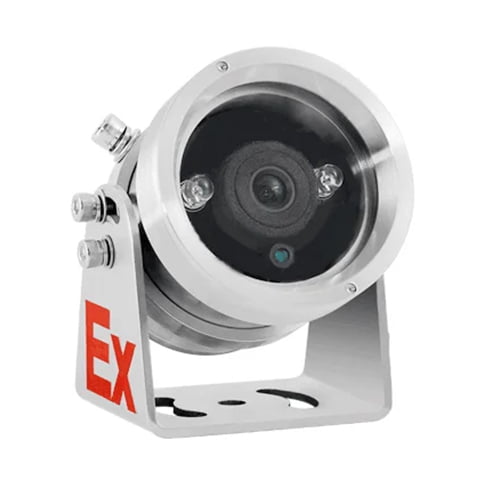
|
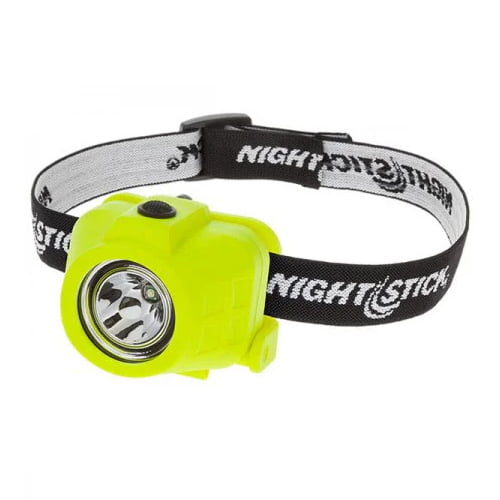
|
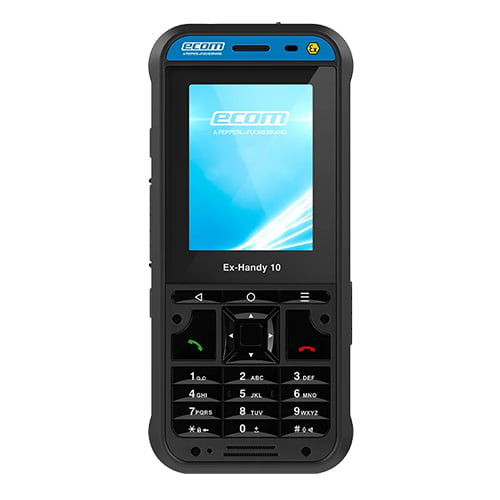
|

|
Prioritize safety and compliance with ATEX-certified equipment to create a secure and protected workplace for all.
Your commitment to safety is the key to a successful future in hazardous environments.
“In our site, it’s running all day off at night for a week now and we did not experience any problem. My team love it” — Jude, Verified Buyer



